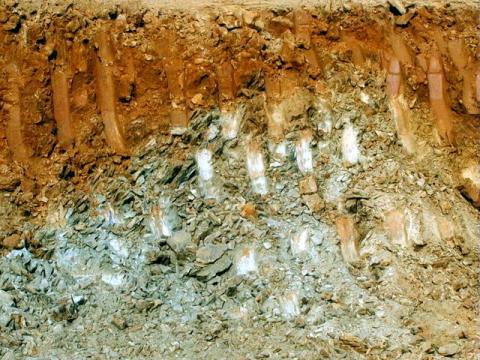
If you’re in charge of a workplace, you’re required by law to have an asbestos management plan in place, unless your premises were constructed after 31 December 2003 or the presence of asbestos has been ruled out by a comprehensive asbestos survey.
About naturally occurring asbestos (NOA)
We normally think about asbestos in its processed form, and expect to encounter it as a result of contamination from its use as a building material.
However, asbestos is a naturally occurring substance, so although it’s not an everyday occurrence, it’s still possible to encounter it in its natural form, in rock, sediment or soil.
A project was undertaken by the Geological Survey of NSW to map all known and potential naturally occurring asbestos sites in the state, identifying areas with low, medium and high potential for asbestos to be present. Since 2015, the resulting data has been available via an online map.
Should I be concerned about naturally occurring asbestos?
Thanks to the availability of mapping data, it’s possible to check, before undertaking an activity, whether you are going to be in an area with potential for naturally occurring asbestos. If so, you can take some precautions to reduce your chance of exposure.
In particular, precautions should be taken by people living, farming or organising recreational activities in areas of risk, and SafeWork NSW has published recommendations for each of these groups.
People living in areas of naturally occurring asbestos can take measures to exclude dust from their homes, such as cleaning with wet cloths and mops, regularly washing items that might collect dust, and closing windows on windy days. They can also take precautions outside, such as not using leaf blowers, and sealing driveways and pathways to minimise dust.
People farming in areas of naturally occurring asbestos can delay dust-generating activities on windy days, wet areas to minimise dust generation during activities that disturb soil like planting and digging, and use protective equipment when using heavy machinery.
Finally, people organising recreational activities in areas of naturally occurring asbestos can limit activities that generate dust, postpone or restrict activities on windy days, and discourage activities in areas of particularly high risk.
What’s an asbestos management plan?
An asbestos management plan — and its closely related document, an asbestos register — is vital for any organisation that’s at risk of asbestos contamination, however slight. But many organisations are confused about what these documents are for, and what they should consist of.
At its simplest, an asbestos register outlines where asbestos has been found in the workplace, while an asbestos management plan outlines the processes the organisation has in place for dealing with that asbestos.
The asbestos management plan must include:
- decisions, and reasons for the decisions, about the management of asbestos at the workplace, for example safe work procedures and control measures
- procedures for detailing accidents, incidents or emergencies of asbestos at the workplace
- workers carrying out work involving asbestos, for example consultation, information and training responsibilities
There are a variety of other elements that might be included in an asbestos management plan if they’re available and relevant. These include:
- an outline of how asbestos risks will be controlled
- a timetable for managing risks of exposure
- identification of individuals and their responsibilities
- procedures for reviewing the asbestos register and management plan
- air monitoring procedures at the workplace, if required
In other words, the asbestos management plan is a living document that should give a clear indication of what should happen in the case of any incidents that involve asbestos.
If you have any questions about asbestos risks or asbestos management plans, contact Airsafe on (02) 9555 9034. We’ll be happy to help.

For many years, it’s been illegal in Australia to manufacture products with asbestos, or to import products containing asbestos.
However, concerns have been raised about products imported from China being tainted with asbestos.
Following our report on asbestos found in Chinese-manufactured cars, it was confirmed that asbestos-contaminated building materials have been used in construction projects across Australia. Even more disturbing, asbestos was found in children’s crayons, resulting in calls for a widespread product recall.
Asbestos found in building products
According to a 2016 ABC news story, concrete fibre sheeting containing asbestos was found at 64 sites, including 17 in New South Wales.
Peter Tighe, CEO of the Asbestos Safety and Eradication Agency, said this was likely to become an increasing problem, with more and more products being imported into Australia rather than being manufactured here.
It’s an emerging problem and it seems to be growing exponentially, as more and more products are brought into Australia, because of the wind-down of manufacturing in this country.…What we’ve really got now is really an indication which could be the tip of the iceberg.
Although imported products must be certified as asbestos free, the country of origin may not have the same rigorous certification standards as Australia. While sometimes the asbestos is caught by Customs, too much gets through, according to Michael Shepherd, president of the Asbestos Industry Association:
Importers are accepting these goods in good faith and they’re relying on the documentation from overseas stating these products are asbestos-free.…From what we know, customs are checking less than 5 per cent of all products that come into Australia, so it’s very difficult to identify which products are coming in and which products do contain asbestos.
Calls for increased enforcement
This led then opposition leader (and long time asbestos awareness advocate) Bill Shorten to warn of a possible “fourth wave” of asbestos victims:
We have had the people who worked at the mines and the mills who breathed it in and many of them have died.
We have got people who’ve worked in the building industry, commercial and residential, who might have been exposed. Now we’ve got people who are renovators and DIY.
What we don’t want is a fourth wave of asbestos injury in this country, caused by imported products coming in with asbestos in them.
Lack of training a concern
Because asbestos has been banned from use in building materials for such a long time, there is a generation of construction workers who may never have been fully trained in asbestos safety. Peter Tighe warns that, because tradespeople believe the materials they are working with are free of asbestos, they may not be taking the proper precautions, especially when cutting, drilling or otherwise manipulating asbestos products.
The imported product found to contain asbestos is concrete fibre sheeting. As with the fibro of the past, this means that the asbestos is bonded, so it presents little risk while the product is kept intact. However, as soon as the sheeting is cut, drilled into or otherwise broken, the asbestos can become friable, meaning asbestos fibres can be released into the air to be inhaled by tradespeople, their clients and members of the public.
Asbestos found in children’s crayons
It’s not just building materials that are at risk of being tainted with asbestos. As we previously reported, asbestos has been found in imported car parts. But perhaps most concerning of all, asbestos was found in packets of children’s crayons.
The crayons containing asbestos were marketed with children’s characters such as Peppa Pig and Dora the Explorer. Although only a few packets of crayons tested positive for asbestos, stationery chain Officeworks took the step of removing all crayons made in China from its shelves as a precaution. Asbestos Council of Victoria chief executive Vicki Hamilton called for a recall of all wax crayons originating in China:
Every packet of crayons that has been imported from China is a potential risk.…I am very concerned for our children – kids put things in their mouths and that concerns me with these items immensely.
Asbestos in imported products a systemic problem?
The fact that asbestos has been found in three different kinds of products imported from China suggests that Australia may be facing a wider, more systemic gap in its customs process, rather than just a few isolated incidents.
Unions have warned that the problem could get worse as a result of the China-Australia Free Trade Agreement which came into force at the end of 2015.
Asbestosis victim Terry Miller, an ex James Hardie employee who later became president of the Asbestos Victims Association SA, spoke of his concerns about Australia potentially becoming an asbestos “waste dump”, fearing that Customs “just don’t have the resources, don’t have the manpower to inspect everything that’s coming in”.
Get any suspicious materials tested
If you’re concerned about possible asbestos in any product or material, whether or not it has been imported, your first step should be to get it tested for asbestos. Airsafe offers a reliable asbestos testing service from our state of the art laboratory, with fast turnaround times and NATA accreditation. If you have any questions about asbestos, call us on (02) 9555 9034.
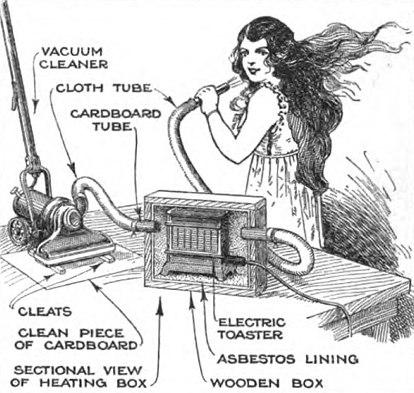
Asbestos: it’s in more places than you think
Despite its prominence in Australian news, very few people realise just how common the use of asbestos once was. Given its wide availability and low cost, the fibre was once found in several everyday household goods. To this day, asbestos awareness organisations have to keep a close eye on the manufacturing ethos of many companies across the globe, ensuring that the harmful mineral is not still being used.
1. Asbestos in hairdryers
Until 1980, asbestos was contained in most hand-held hairdryers. These (now vintage) hair dryers are incredibly dangerous to use, as they blow asbestos-contaminated air directly into the user’s breathing zone.
According to Asbestos.com, several of the tools that hairdressers work with on a daily basis, such as hand-held dryers and hood-style hairdryers, once contained toxic levels of asbestos. But unfortunately, it was not only hairdressers who were once exposed.
It has been estimated that at one point, up to five million asbestos-containing hand-held dryers were in circulation. These beauty appliances were manufactured by several different brands, including Conair and Remington, making up approximately 90% of all annual domestic hairdryer sales.
Thankfully in 1979, when the U.S. Consumer Product Safety Commission found that dryers from 11 major brands contained dangerous amounts of asbestos, each of the manufacturers issued a voluntary refund and return policy for the potentially dangerous, contaminated equipment. These brands were then forced to discontinue production of all asbestos-insulated dryers.
2. Asbestos in toasters
During the 50s, 60s and 70s, many toasters were riddled with asbestos that had been used predominately for heat insulation in the body, as well as electrical insulation around the cord. Upon close examination of some of these retro bread-warming appliances, a variety of asbestos insulation panels (attached to heating elements) can be found.
While retro appliances have become a trend in recent years, antique collectors should be mindful when considering using these older style toasters.
3. Asbestos in heaters
Given that asbestos, by its very nature, is incredibly heat resistant, friable materials containing asbestos may be found in older domestic heaters (both portable and affixed), in the form of internal insulation. Thankfully, all heaters made from 1974 onwards have been asbestos free, thanks to laws banning the use of the fibre in manufacturing.
However, if you have purchased an older home that comes with heating devices, be mindful of the fact that they could contain asbestos. Replacing these appliances, or at the very least having them inspected by a professional, would be advisable.
4. Asbestos in irons
Understandably, asbestos was also found in a range of vintage clothing irons. In the early 1900s, the mineral was used under the handles of the appliances, inside of a “hood” or cover that fitted over a heated “core”. The asbestos hood held in the heat, channeling it through the hot solid steel surface that pressed the clothes smooth.
Iron rests were also made with the most common variety of commercial asbestos, chrysotile asbestos. However, companies who once produced these potentially dangerous appliances, such as Craftmade Products Company (a division of Norton Accessories Manufacturers of New York prior to 1960), are no longer in operation.
5. Asbestos in children’s toys
Perhaps one of the most concerning findings of all, asbestos has been detected in children’s toys. Playthings containing the deadly mineral have been a major concern in the past, due to the heightened susceptibility of children to fibres that have entered the body. Asbestos.com reports that infants and children who are exposed to asbestos can develop related diseases relatively early in life—sometimes before the age of 20.
In 2000, the Seattle Post-Intelligencer reported findings of asbestos in three major brands of crayons: Crayola, Prang and Rose Art. As hard as it may be to believe, the asbestos had been found in the talc used by the crayon manufacturers as a binding agent. Concentrations were low, however the brands concerned in the scandal were still instructed to find a substitute for the harmful mineral.
In 2007, The Asbestos Disease Awareness Organisation also reported that Plant Toys’ CSI Crime Scene Investigation kit toys contained asbestos.
6. Asbestos in Vermiculite Garden Products
According to the Asbestos Network, vermiculite can be found in fertilisers, pesticides, potting mixes and composts as a result of the aeration and drainage that it inherently provides. However, it is said that this mica ore may contain harmful traces of asbestos.
A study carried out by the US Environmental Protection Agency(EPA) discovered trace amounts of asbestos in 17 or 38 products tested (Sampling and Analysis of Consumer Garden Products that Contain Vermiculite, EPA, August 2000). As reported by the Asbestos Network, four of these products contained substantial amounts of asbestos:
- Schultz’s Horticultural Vermiculite
- Earthgro’s Best Vermiculite
- Hoffman’s Vermiculite
- Ace Horticultural Grade Vermiculite
Be aware of asbestos
In Australia, the sale and importation of asbestos has been banned by law. However, many South American countries are yet to ban the use of the mineral in manufacturing, or regulate the sale of a variety of asbestos-containing products.
For this reason, it’s a good idea to be mindful of any products purchased overseas. It’s also important to be wary of any second hand, retro or vintage goods, including old toys and severely dated electrical appliances.
If you’re concerned about asbestos in your home, Airsafe offers asbestos inspections and an accredited asbestos testing service.
Questions about asbestos? Call Airsafe today on (02) 9555 9034
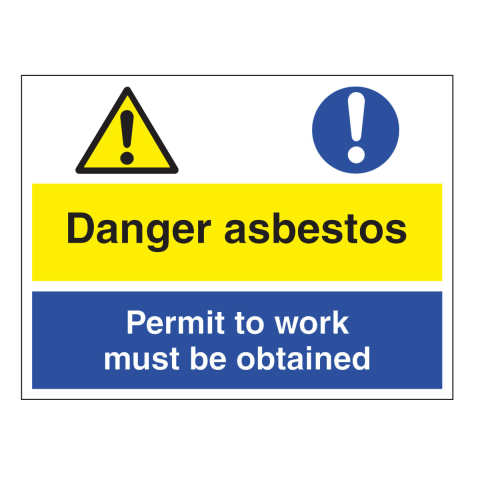
In May of 2013 the ABC’s Lateline program reported that serious safety breaches were believed to have occurred during the rollout of the National Broadband Network, an Australia wide project designed to upgrade the existing fixed line phone and internet network structure.
As a result of the scandal, Telstra—who were responsible for maintaining the safety of the pits and ducts being used for the project—set up a team of professionals responsible for the overseeing of all remediation work across its network. The company’s move came after several of its subcontractors were accused of releasing potentially harmful asbestos fibres into residential areas.
What did we learn from the Telstra NBN scandal?
Addressing the media directly, Telstra accepted responsibility for all incidents of potential asbestos exposure. However, the incident raised a host of questions about the lingering presence of potentially harmful asbestos across the nation.
Contractors who had been employed to work on the rollout of the NBN were faced with an unexpected workplace related risk: exposure to asbestos.
So, what are the current prohibitions on asbestos in the workplace?
As outlined by Safe Work Australia, a person conducting a business or undertaking must not carry out or direct or allow a worker to carry out work involving asbestos if that work involves the following:
- manufacturing asbestos
- supplying asbestos
- transporting asbestos
- storing asbestos
- removing asbestos
- using asbestos
- installing asbestos
- handling asbestos
- treating asbestos
- disposing of asbestos
- disturbing asbestos
The final prohibition against asbestos in the workplace came into effect on 31 December 2003. However, these prohibitions do not apply if the work involving asbestos is carried out in prescribed circumstances.
Occupational asbestos exposure
Up until the national ban on asbestos began in December 2003, asbestos was still used in a range of industries, materials and products. Not only was asbestos affordable, it could also be easily woven into fabrics, providing excellent insulation properties.
Today it is now illegal to mine, manufacture and handle asbestos in Australia. Unfortunately, this does not mean that all risks to asbestos exposure have suddenly disappeared, as was seen in the Telstra NBN scandal in May 2013.
Inhalation of asbestos dust or fibres in the workplace often occurs unknowingly. This could occur through either the direct handling of asbestos, or the handling of materials containing the potentially deadly fibres.
SafeWork NSW has published a comprehensive Code of Practice that outlines how to manage and control asbestos in the workplace. However, many workers still risk asbestos exposure hazards on a daily basis.
What materials may contain asbestos in the workplace?
Though the risks of exposure to asbestos have been greatly reduced, they have not been eliminated completely. Workers in particular industries are often exposed to the following materials:
- Boilers and heating systems
- Cement pipes
- Automotive parts
- Electrical wire
- Chemical containers
- Heat-protective pads
- Roofing and flooring materials
- Adhesives and sealants
- Insulation products
Is asbestos in the workplace always dangerous?
Ever since the Industrial Revolution, heavily industrial job sites have commonly used asbestos parts to insulate their machinery and protect against fires. Asbestos was also the most affordable and most preferred insulation for heat generating equipment or boilers; much of this insulation still remains in place today.
However, these products are generally not a health threat so long as they remain intact. According to government regulations, a worksite is still considered safe as long as the asbestos materials remain in a “non-friable” state.
In time, asbestos products can deteriorate, and as this occurs workplaces must be vigilant in repairing and replacing them. During this process, potentially harmful asbestos fibres may be released into the air.
What occupations are most at risk to asbestos exposure?
Workers with the greatest asbestos exposure risks are usually employed in industrial occupations. Although some workers have also developed asbestos-related diseases from exposure in hair salons or schools, the riskiest environments are factories, shipyards, refineries, power plants and other industrial job sites.
According to Asbestos.com, the following occupations run the greatest risk of being exposed to asbestos while on the job.
1. Construction workers
Given that thousands of construction products were made from (or contained) asbestos prior to the 1980s, many construction workers may still come into contact with these materials today. According to Asbestos.com, demolition crews and home renovators are among the most at risk to exposure.
2. Firefighters
During a fire, building materials that contain asbestos are likely to crack or spall. “Spalling” occurs when flakes of the material break away as a result of pressure inside the material. For this reason, potentially harmful asbestos fibres can easily be released during a fire.
Fortunately, air-monitoring after fires has shown that asbestos fibre concentrations are typically very low. Even so, firefighters are at risk of inhaling potentially harmful airborne particles each time they extinguish a blaze.
3. Industrial workers
Industrial workers include mechanics, foremen, trade labourers, chemical workers and machinery operators. Before asbestos was banned, workers in these fields were regularly exposed to products such as asbestos paper, textiles, gaskets, insulation and fireproofing. Today, the risk has lessened, although a low chance of exposure still remains on work sites that were built before the 1980s.
4. Power plant workers
For power plant workers, heat-resistant products (such as fireproofing spray and pipe insulation) were the most common sources of asbestos exposure before the material was banned. But today, cutting through old pipes remains a threat to exposure for workers in this field.
5. Shipyard workers
According to Asbestos.com, studies have shown that nearly 30% of mesothelioma lawsuits are filed by veterans and government shipyard workers. Findings also showered that boiler workers and those working on the construction, demolition and repair of ships experienced the highest levels of exposure.
How do I know that my workplace is safe?
There are now specific laws in place to protect workers from the dangers of asbestos exposure. Today, if you manage or control a workplace, you are required to engage a professional to audit your workplace to identify any asbestos or asbestos containing materials.
According to the law, management must ensure an asbestos register is prepared and kept at the workplace. This register must record any asbestos identified at the workplace or likely to be present at any given time.
If you want to know more about asbestos audits, registers and management plans for your place of work, call Airsafe today on (02) 9555 9034
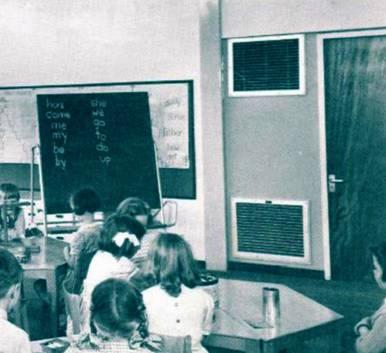
Given the widespread use of asbestos by the Australian construction industry before 1980, there are rising concerns about the presence of the potentially toxic mineral in many of the nation’s schools.
And Australia is not the only country with these concerns. The Guardian UK has reported that more than 75% of the country’s school buildings contain asbestos and that many—predominantly the vast number that were built in the three decades after the second world war—are now coming to the end of their days. The Guardian states that, according to the Local Government Association, disputes over asbestos removal from school buildings are holding up a significant number of projects related to school renovations and redevelopments.
Asbestos in schools a widespread problem
That three-quarters of schools in the UK contain asbestos should come as no surprise, given the prevalence of the use of the material in the 20th century. Nor should it come as a shock that other nations around the globe are facing similar concerns. According to the US Environmental Protection Agency (EPA), asbestos-containing materials reside in many of the approximately 132,000 primary and secondary schools in the United States. It seems that schools in the United Kingdom are not the only ones who need to be concerned.
Asbestos in Australian schools
In February, ABC News reported that hundreds of schools in the state of New South Wales could be contaminated with deadly asbestos. To add to the concern, a government expert had warned that authorities were using band-aid measures to clean up the problem. Aware of the dangers of asbestos, parents told the ABC that they feared for their children’s safety, because of repeated exposure to fibre asbestos sheeting used as landfill in school ovals and playgrounds which, in some cases, had been cleaned up multiple times.
Asbestos clean up in schools not good enough
The ABC report cited Manly West Public School on Sydney’s northern beaches as a place of particular concern. The grounds have been cleaned up three times after fragments of bonded asbestos were discovered on the school oval in 2012.
After the first two attempts at clearing all traces of asbestos were unsuccessful, the Manly West P&C took it upon themselves to raise tens of thousands of dollars to pay consultant Col Scotts to clean it up for a third time.
Mr Scotts from artificial turf company Grassman told the ABC that he had been contacted by a few schools that were concerned with the presence of asbestos on school grounds; schools that weren’t particularly happy with the way the education system was handling the problem.
Mr Scotts was highly critical of the method often used to clean playgrounds, knowing as chicken picking. This method involves a team of people in protective gear walking in a line and double bagging any asbestos fragments found.
“They’re just skimming the surface and that is a temporary fix,” Mr Scotts told the ABC.
More needs to be done to make sure schools are safe
Peter Tighe, the chief executive of the Commonwealth Asbestos Safety and Eradication Agency, says that to date government clean up efforts have been insufficient, labelling them bandaid treatments for something which might be a greater problem.
If there’s smoke, there’s fire. If you’ve got an indication that there’s widespread contamination at a surface level, then surely what it needs is further investigation to ensure that there isn’t an ongoing risk to the public.
Asbestos management plans in New South Wales schools
The Asbestos Management Plan (AMP) sets out the department’s strategy for minimising the risk of any person on one of the Department’s sites being exposed to asbestos. Part of the Asbestos Management Plan is an individual asbestos register, which details where the department knows or suspects asbestos may be located.
As outlined on the NSW Government Education & Communities website, the AMP is a reference tool for contractors so they can check to see if the area they are working in contains or may contain asbestos. The contractor is then able to take the extra precautions needed.
The ABC report found that almost 400 schools across the state of NSW had implemented site-specific asbestos management plans. Many of those plans recorded the discovery of asbestos fragments in school grounds and how they were being contained, as well as details regarding the clean-up involved.
According to the ABC, some of the plans stated that the removal, clean-up and disposal of the visible fragments of fibrous cement had been on the ground surface only. Removal was thus limited to the accessible surface areas only. However, there are concerns that these findings could be only the tip of the iceberg.
Airsafe prepares asbestos registers and management plans for organisations of all sizes, from government departments to schools to small businesses. If you need help, get in touch on (02) 9555 9034.
Where can asbestos be found in schools?
Asbestos in schools is more than just a surface issue. While it is comforting to know that attempts have been made to remove visible asbestos fragments from school ovals and playgrounds, such as in the case of Manly West Public School, the threat is one that could run deeper.
Knowing how to spot potential locations of asbestos-containing materials can help parents and teachers maintain a safe environment for students and staff, as well as for members of the local community. Common locations for asbestos-contaminated materials in schools include:
- Damaged wallboard, drywall or plaster
- Worn soundproofing material
- Deteriorated seam pipes or boiler insulation
- Crumbling floor tiles, roofing or ceiling panels
- Old heating and air-conditioning equipment
- Chipped paint
If you notice a deteriorated area in your local school, you can request a copy of the school’s asbestos management plan, or talk to a custodian to find out if it poses an asbestos threat.
Testing for asbestos in schools
You cannot tell whether or not a material contains asbestos unless you test it. For this reason, forwarding samples of suspected asbestos containing materials/products for analysis to a trusted professional is an important part of assessing the situation at your school or workplace.
Airsafe offers NATA-accredited asbestos testing services. In our state of the art laboratory, we analyse samples using:
- Polarized Light Microscopy (PLM)
- Dispersion Staining (DS) techniques
The result: a definitive answer, on the same day if required, backed by Airsafe’s unbeatable experience and reputation. Airsafe is NATA Accredited for Sample Identification for Asbestos.
If you suspect your local school or workplace may contain asbestos, call Airsafe today on (02) 9555 9034.
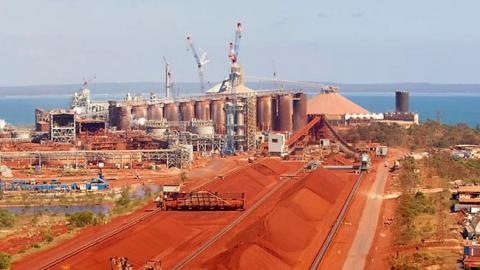
At its height, the asbestos industry reached into virtually every corner of Australia. The latest asbestos story began at an industrial site on the Gove peninsula, in the far north of the Northern Territory.
Zorko Zabic, 74, worked at the Gove alumina refinery in the 1970s cleaning asbestos from pipe works, and was diagnosed with mesothelioma after suffering chest pains early last year.
Zorko Zabic VS Rio Tinto
In January, twelve months after his initial diagnosis, the Supreme Court ruled that Mr Zabic developed the malignant mesothelioma as a result of his exposure to asbestos dust during his time at the Gove refinery, and that Mr Zabic’s exposure was a result of negligence by the then mine operators Alcon Gove, a company that has since been bought by mining giant Rio Tinto.
Even so, the court ruled against the claim because Mr Zabic’s symptoms emerged after the Workers Rehabilitation and Compensation Act came into full force in 1987.
The initial rejection of the claim was a result of the changes made to the workers compensation legislation in the Northern Territory in 1987, amendments that abolished workers’ rights to make a common law claim for injury. This meant that, by law, Zabic had to lodge his claim prior to 1987 in order to be eligible to lodge a common law claim.
But in March the Court of Appeal overturned the Supreme Court’s decision to reject Zabic’s claim, opening the door for Northern Territory asbestos victims to launch legal action, irrespective of when their symptoms first began to emerge.
Mr Zabic’s lawyer, Roger Singh from Shine Lawyers, says that the case and the ruling was an important one, adding that the decision would have widespread implications for the Northern Territory.
“Today’s decision is a win for workers, a win for their families and a win for humanity,” he said after the ruling.
Singh believes that the ruling will pave the way for many asbestos victims in the Northern Territory who have previously been denied justice to come forward and seek redress for themselves and for their families.
The asbestos court case ruling
In March, Mr Zabic won his case against Rio Tinto. It was decided that Mr Zabic should be paid $425,000 in compensation, a decision that his lawyers described as just the “tip of the iceberg” of potential asbestos related cases in the Northern Territory.
On top of compensation, Rio Tinto also provided an undertaking to the court to pay Zabic’s legal costs.
Rio Tinto challenges asbestos compensation ruling
Three months after Mr Zabic won his appeal, the High Court allowed Rio Tinto to challenge the ruling, but still required the company to pay Mr Zabic the decided $425,000 in compensation.
In an August 2015 ruling, the High Court threw out Rio Tinto’s appeal.
What can you do to help victims of mesothelioma?
If you’re concerned about the impact of asbestos-related illness such as mesothelioma, there are steps you can take to help. The Bernie Banton Foundation is a not-for-profit organisation that aims to make a difference by helping to alleviate exposure to asbestos, and promotes asbestos awareness, education and advocacy.
To make a donation, please visit The Bernie Banton Foundation’s website.
Questions about asbestos in your home or workplace? Call Airsafe on (02) 9555 9034
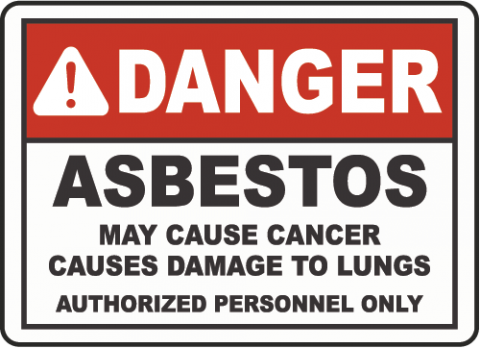
In May of 2012, WorkSafe Victoria reported that an unlicensed asbestos removalist had been convicted and fined $13,250 for arranging unlicensed asbestos removal and disposal, his second offence in just two years. Geelong-based Joshua Like Marshall, operating as Affordable Demolitions and Asbestos Removals, had told a renovation company he was accredited by WorkSafe to carry out asbestos removal at a Victorian property, although he did not hold a licence.
In light of the event, WorkSafe’s then General Manager of Operations, Liza Sturzenegger, stressed the importance of checking the credentials of supposed asbestos removal professionals. When hiring someone to do asbestos removal work, Ms Sturzenegger said, it’s important to ensure they’re qualified, either by asking to view their licence, or getting in touch with WorkSafe (or SafeWork NSW in NSW). Never, under any circumstance, should you take a company’s word for it.
Be wary of the asbestos-testing removalist
Asbestos removal is an industry like any other, and is occupied by many licensed, hard working contractors. However, like any business, removalists who operate safely are at risk of being undercut by unaccredited individuals out to make a quick, dishonest profit, often at the risk of others.
Simply put, asbestos removal companies don’t make money if no asbestos can be found. In other words, if samples of suspect building materials test negative to traces of asbestos, the asbestos removalist will no longer be required, resulting in lost business. As a result, it is important that professional asbestos removal companies who also offer asbestos testing are fully licensed and trust-worthy organisations.
If test results return positive for asbestos, the removalist will need be hired to clear it from the premises, and be paid accordingly. However, if the test results return negative, the asbestos removalist will not be required, and thus lose work. Making sure that you have hired an honest, qualified professional is paramount to making sure you’re getting accurate, true results.
Here at Airsafe, we’re in the business of testing for asbestos, not removing it. Our NATA accredited laboratory uses state-of-the-art equipment to get you a definitive answer about asbestos. We get you the results quickly — the same day if required — with no additional fees for a fast turnaround, just a low fixed price per sample. Businesses such as our who hold NATA accreditation will be the best companies to hire for asbestos testing at your commercial residence or in your home.
If your test results come back positive for asbestos, the next step is to find the best, most qualified removalist for the job. At Airsafe, we’ve worked with just about every asbestos removal contractor in Sydney, and we know that the good ones are few and far between. Luckily, we’re here to help you find the right man for the job. The asbestos removalists we recommend are experienced, reliable Sydney businesses that we trust to get the job done right.
The importance of NATA accreditation
The National Association of Testing Authorities, Australia (NATA) provides a foundation for confidence in Australia’s calibration, testing, and inspection activities. NATA provides independent assurance of technical competence through a proven network of best practise industry experts, for those customers who require confidence in the delivery of their services. Essentially, NATA only authorises the good guys.
Employing the services of a business without NATA accreditation increases the likelihood that your results may not be entirely accurate or comprehensive. Companies with laboratories that have not received the NATA seal of approval could be charging you for their substandard services.
Before hiring a company or contractor, it’s important to make sure that all testing is carried out by a NATA accredited laboratory. Otherwise, it’s hard to be sure whether the information you get back is factual, or fraudulent.
If you’re not sure whether or not the contractor you are considering is NATA accredited, you can find our more on the NATA website. Or, call NATA on 1800 621 666.
Asbestos removalists need licences, too
Persons undertaking asbestos removal are also required to be appropriately trained and to hold a licence. In Australia, the Commonwealth, state and territory work health and safety regulators administer licences for asbestos removal in their jurisdiction. As outlined by SafeWork NSW, there are two licences for asbestos removal. They are:
- Class A
The class A licence allows contractors to remove friable asbestos, non friable asbestos and any asbestos contaminated dust and/or debris.
- Class B
The class B licence is more common, and allows contractors to remove non friable (bonded) asbestos, such as fibro sheets. Contractors with a class B licence can only remove the asbestos contaminated dust and/or debris associated with the removal of non friable asbestos.
SafeWork NSW safety inspectors can issue on the spot fines to any individual or business that appoints an unlicensed asbestos removalist, and to licenced asbestos removalists who fail to notify SafeWork NSW of licensed asbestos removal work.
Dealing with Asbestos without getting ripped off
When asbestos is suspected, it’s important to get an answer quickly. Of equal importance is employing the services of a company you can trust. Hiring the wrong contractor to assess your home could result in inaccurate results, and eventually, unnecessary and costly asbestos clearance and removal.
In Airsafe’s state of the art laboratory, we analyse samples using:
- Polarised Light Microscopy (PLM)
- Dispersion Staining (DS) techniques
The result: a definitive answer, on the same day if required, backed by Airsafe’s unbeatable experience and reputation. At Airsafe, our rigorous quality systems mean we meet all government requirements around asbestos testing, so you can relax in the knowledge that our testing is 100% accurate.
Airsafe is NATA Accredited for Sample Identification for Asbestos.
Questions about genuine asbestos testing? Call Airsafe today on (02) 9555 9034
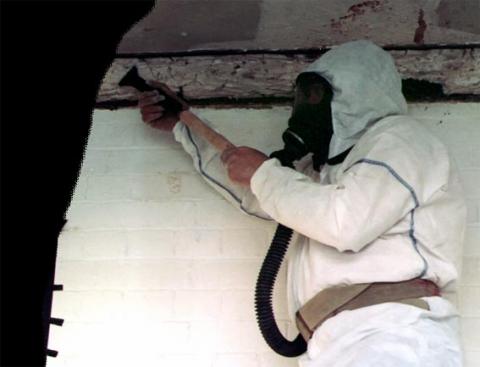
In 1982, Thomas J. Lueck published a piece in the New York Times titled Technology: Has Asbestos a Substitute?. In his article Lueck stated that asbestos, though it was highly effective and widely used, was the subject of more intense scientific research and public controversy than any other mineral substance.
Published more than 40 years ago, the piece demonstrates the ongoing asbestos debate, and the dangers of the continued use of the substance in manufacturing in countries with looser regulation than Australia. How can we stop overseas manufacturers using the prohibited substance?
The most obvious answer seems to be to find a suitable alternative. But four decades after Lueck published his piece in the New York Times, asbestos continues to be used and imported across the globe. More than a local problem, it is a worldwide concern. And so, one can’t help but wonder, can suitable replacements truly be found for asbestos in its broad variety of applications?
Asbestos Replacement Products
In Australia today, the dangers associated with asbestos are well known, and it’s long been illegal to sell products that contain asbestos. As a result, there are numerous alternatives to asbestos products currently on the market. Many of these asbestos replacement materials are “green” in nature, providing a safe alternative for the environment as well as for the individuals coming into contact with the product, or residing within the building, where the material has been used.
Asbestos Replacement 1: Amorphous Silica Fabrics
Amorphous silica fabrics are high temperature materials that are used for insulation and protection applications. Shipyards, electrical and aerospace industries all make use of this material, as the cloth will not burn, rot or grow mildew. Amorphous silica fabrics are not generally used for residential purposes, such as building homes or renovations, since the fabrics do contain fibreglass.
Asbestos Replacement 2: Cellulose Fibre
Cellulose fibre is one of the most common and widely used alternatives to asbestos, and it’s relatively simple to manufacture. Cellulose insulation is made from finely shredded newsprint and is chemically treated to reduce moist and increase its resistance to fire. This is another excellent “green” option, since the cellulose fibre is typically made up of 85% recycled material.
Asbestos Replacement 3: Polyurethane Foam
Unlike cellulose fibre, polyurethane foam is a spray product that is most commonly used in roofing materials, such as insulation. However, it is also found in floatation devices, car upholstery and seating, and in the design of movie theatre sets. The foam combines the best qualities of plastics and rubber. Much like polystyrene, the bubbles trapped inside polyurethane foam make for a poor heat conductor and provide excellent quality thermal resistance.
Asbestos Replacement 4: Flour Fillers
No, you won’t find these in the kitchen pantry. Flour fillers are crack and crevice fillers and extenders that are made completely out of natural materials, and help with building insulation. More specifically, these products may include pecan shell flour, wheat flour, rice flour, or rice hull ash. Better yet, this completely natural product is an ideal “green” alternative to potentially toxic asbestos minerals, with no safety hazards to anyone who is exposed.
Asbestos Replacement 5: Thermoset Plastic Flour
Thermoset plastic flour might not sound overly technical, but it’s a very common alternative to asbestos. It is made by heating a liquid of powder before moulding it into the shape you require it to be. These products can be filled with wood flour or other low-priced fillers, which will in turn reduce your cost and deliver you a great insulation alternative to the once commonly used asbestos. Thermoset plastic flour is also very versatile in nature. The product’s uses vary from electrical insulation to auto parts. As a result, this material would be an option to consider for those car manufacturers who continue to use asbestos in the brake linings of their vehicles, products which are then imported overseas, to countries just like Australia.
Are asbestos alternatives readily available?
As a result of the Mr Fluffy scandal, as well as the ongoing legal case involving James Hardie, many Australians are now acutely aware of the potential dangers of asbestos. However, few people are aware of the asbestos substitute materials that are available for commercial and residential use today. Whether you are renovating your home, or remodelling your workplace, you no longer need to utilise dangerous materials that are riddled with the harmful mineral.
Do you have asbestos that needs replacing?
Before it comes time to remove the asbestos from your home or workplace, it’s important to assess what you’re dealing with. If you have encountered any building materials that you suspect may contain asbestos, Airsafe are here to help.
Airsafe’s NATA accredited laboratory uses state-of-the-art equipment to get you a definitive answer about asbestos. We can deliver you the results quickly—the same day if required—with no additional fees for a fast turnaround. At Airsafe, there is just one low fixed price per sample.
Once you have your answer, Airsafe can refer you to a specialist asbestos removal company.
It’s then a matter of finding an alternative product that performs the same functions as asbestos. Many of these alternative products will be far less risky substitutes, providing a safer environment for you and your family, or for you and your staff. Best of all, most are readily available and can be provided by a contractor upon request. Meaning you no longer have to settle for asbestos.
Questions about asbestos testing? Call Airsafe on (02) 9555 9034
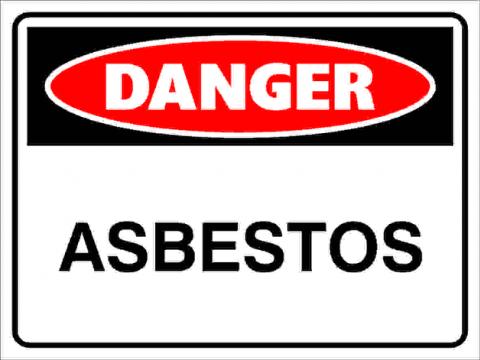
A 2015 article published in The Australian revealed that consumers are being exposed to a booming trade in Chinese products that may contain asbestos, with border security officials admitting to limited capacity to stop contaminated goods arriving on our shores,
Amid concerns that these contaminated goods could potentially be contributing to a new wave of disease, the Federal Government conceded that it was unable to guarantee Chinese imports were free of asbestos.
What products made in China could contain asbestos?
There is evidence to suggest that asbestos is being used in the following industries:
- Car manufacturing
- Mining
- Building and construction
Despite Australian laws set in place to ban the importation of goods containing asbestos, international importers and exporters of these industries are failing to guarantee the safety of their goods. And though this may come as a surprise to many Australians, some corporations have already been caught out for using asbestos in the products and goods shipped to our shores.
Asbestos in made in China products sold in Australia
In August of 2012, The Australian Manufacturing Workers Union called for an investigation into how thousands of cars containing asbestos came to be imported into the country. At the time, the ABC reported that Ateco Automotive had recalled almost 25,000 Great Wall and Chery Chinese cars after asbestos was found in the engine and exhaust gaskets. As a result of the discovery, Ateco Automotive asked owners to return the cars to their dealerships at once.
While the asbestos bound into gaskets and exhaust systems did not pose any immediate risk to the consumer during the use of the vehicle, there were concerns that any home maintenance done to cars could cause damage to these parts, thus compromising the intact nature of any asbestos fibres.
Maintenance activities such as these, which render asbestos or asbestos containing products friable, are common practise in the automotive manufacture and repair industries. Simple processes like the sanding-down of brake rotors or linings can easily release asbestos into the surrounding air supply, endangering those in the area of asbestos inhalation.
Importing asbestos into Australia: the rules
Australians should be rest assured that the importation of asbestos goods containing asbestos into Australia is prohibited under the Customs Regulations 1956. However, Australian Customs and Border Protection Service officials recently told The Australian that, despite the best efforts of the organisation, it was unable to guarantee the safety of imported Chinese goods. The department said that it is the importers who are responsible for enduring the goods they import are free from asbestos, and are expected to declare this on important documentation.
The onus is thus on the importers to ensure they do not import prohibited goods into Australia. Importers must ensure their goods are asbestos free. As outlined on their website, where Customs and Border Protection suspects that goods arriving at the border may contain asbestos, they will be detained and examined. The arrangement and cost of any independent inspection, testing, storage and disposal of goods containing asbestos will be borne by the owner.
But as for policing the matter to ensure that these standards are met, Australian customs officials appeared hindered by a concerning lack of resources, large borders to patrol, and the sheer weight of numbers of Chinese-sourced goods that have been arriving on our shores for years.
However, customs officials do have the law on their side. An Australia-wide ban of the importation, manufacture and use of all forms of asbestos products took effect from 31 December 2003. To complement this ban, the import prohibition on asbestos under the Customs Prohibited Imports Regulations was also introduced.
What are examples of goods that may contain asbestos?
As mentioned above, asbestos has recently been detected in a wide range of imported goods, including but not limited to:
- Gaskets
- Jointing materials in flues
- Furnaces
- Ducts
- Pipe spools
- Heating equipment
- Pressurised hoses
It should be noted that asbestos has also been detected in the packaging of these goods.
Australian Border Force is actively targeting imported goods considered high risk for asbestos contamination.
Who is most at risk of exposure to made in China products containing asbestos?
When Ateco Automotive motor vehicles were recalled in 2012 after asbestos was found in the engine and exhaust gaskets, the company stated that the materials did not present any risk to consumers during the use of the vehicle. However, there are still some groups that are at high risk of exposure to the asbestos that has been found in those made in China goods in question.
At the time of the Ateco Automotive misconduct in 2012, for instance, the biggest risk was to any mechanic or auto electrician who worked on the vehicles in question. Workers who are responsible for the repairs of vehicles and machinery containing asbestos are at higher risk of encountering the material in a more friable state, increasing the likelihood that the toxins of asbestos will be inhaled.
How do you know that your workplace is safe?
If you’re an employer who suspects that your employees may be working with materials that may contain asbestos, call Airsafe today.
Airsafe can send a consultant to your workplace, the same day if required, and take samples of any suspect materials to be analysed in our state-of-the-art laboratory. The result is a speedy turnaround definite answer, supported by Airsafe’s unbeatable experience and solid reputation.
Importantly, Airsafe is NATA Accredited, so our testing process is backed by rigorous national standards. Call us today on (02) 9555 9034
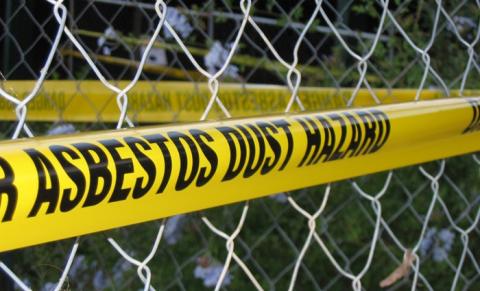
Recent changes within the Real Estate industry reveal that homeowners and home renovators are not the only ones who need to be aware of the potential dangers of asbestos. With the NSW Government estimating that over 5,300 homes could contain the harmful Mr. Fluffy insulation, The Real Estate Institute of NSW recently met with NSW Fair Trading and WorkCover NSW to better understand how their industry should deal with asbestos moving forward. While many Asbestos Awareness groups such as the Asbestos Diseases Foundation of Australia (ADFA) work hard to educate those living in homes that contain asbestos, less has been done to educate the real estate agents who sell these properties on.
Chief executive Tim McKibbin said the real estate professional has largely been left in the dark about how to effectively discharge responsibilities related to asbestos in the homes that they are selling.
This is of particular concern to the REINSW and we have been actively seeking guidance from NSW Fair Trading and WorkCover NSW. A real estate agent is simply not qualified to make an assessment as to whether asbestos is present.
In recent years, partly due to the increase in asbestos cases in Australia, there has been an escalation in the responsibilities associated with the role of the real estate professional. Indeed, Mr McKibbin says that agents are now expected to be across a broad range of issues, including asbestos.
The REINSW, NSW Fair Trading and WorkCover NSW are now working together in order to educate real estate professionals on what to do when it comes to asbestos in the home. Agents will then be better equipped to pass on knowledge to the public; most importantly to Australians looking to buy a home.
The WorkCover asbestos fact sheet
During discussion, WorkCover NSW agreed to assist the REINSW to develop an asbestos fact sheet, setting out steps for agents (and consumers) to follow when addressing the risks associated with asbestos in the home (or in properties of a more commercial nature). Once this fact sheet has been drafted, it will be provided to Fair Trading and REINSW for additional input before it is finalised.
“Once the fact sheet is finalised, we will make it available to all members,” Mr McKibbin said. “While the fact sheet itself is not a long-term solution to the problem, it will provide agents with a pathway to assisting with asbestos risk management.”
Why do real estate agents need to know about asbestos?
In a previous fact sheet published in June 2014, the ACT Government stressed the importance of real estate agents knowing about the dangers of asbestos. The document states that real estate agents have a number of obligations under various laws in relation to asbestos in residential properties. It also goes on to add that these obligations relate to their duties of care to workers and clients. It is stressed that real estate agents must act honestly, fairly and professionally, including appropriate disclosure to potential buyers and tenants.
Given this legal responsibility, it is important that real estate agents are as educated as possible about the nature of asbestos in the home, where it can be found, and what risks is can present.
What should real estate agents look out for?
As part of their job, the ACT Government’s fact sheet says that real estate agents must attempt to identify any presence of asbestos in the property before they put said property on the market to sell. Real estate professionals should include in their initial inspection of the property questions such as:
- the age of the property
- the date of any renovations
- whether the client/vendor is aware of the presence of asbestos products
- whether the client/vendor is aware of any asbestos assessment report for the property
- whether the client/vendor is aware of whether the property was part of the loose-fill insulation removal program.
The ACT Government fact sheet also says that there are a number of documents in a contract of sale (and also on the building file for a property) which may relate to asbestos, such as:
- certificate of completion for asbestos removal work (loose-fill asbestos insulation)—indicating that fibres may still remain in wall cavities
- the lease conveyancing enquiry report—which will state “records indicate that a form of asbestos is or has been present on this Land” if loose-fill asbestos insulation was identified under the removal program
- some building plans, applications and removal control plans
- correspondence to home owners about loose-fill asbestos insulation.
Duty of disclosure and asbestos
By law, real estate agents should disclose the presence of asbestos to all clients (potential buyers and tenants) as it may impact the property values and its use, as well as its safety. If the property has an asbestos assessment report then clients can be referred to this and can understand how the property can be properly managed once its been purchased and/or leased.
However, the degree of disclosure by a vendor’s agent to a potential buyer is a matter for judgment in the individual case. Every home is different, and every property may contain different levels of asbestos; dangerous or otherwise. This is why education is so important. It is imperative that real estate agents can identify the difference between dangerous loose-fill asbestos, and asbestos which will not pose any significant risks to those who will inhabit the home in future.
As a general rule, if an agent has any doubt about whether or not to disclose something, disclosure is the safer option.
How do I know if the home I want to buy contains asbestos?
It is difficult to tell whether a home you want to move into contains asbestos. However, it is reasonable to assume that residential premises constructed before 1985 will most likely contain asbestos products.
Homebuyers should know that real estate agents have a number of obligations under various laws in relation to asbestos in residential properties. If you are currently searching the market to buy, you are well within your rights to ask your real estate agent about the potential presence of asbestos in a home. As a general rule, you should ask about: the age of the property, the date of any renovations, whether the current owner is aware of any asbestos, and whether the property was a part of the loose-full asbestos insulation removal program.
I just moved in, how do I check for asbestos?
The only way to be certain if your home contains asbestos is to have a sample of any suspect material tested by an accredited laboratory. If the material is not tested, it should be treated as though it does contain asbestos.
At Airsafe, our accredited laboratory uses state-of-the-art equipment to get you a definitive answer about asbestos. We get you the results quickly—the same day if required—with no additional fees for a fast turnaround, just a low fixed price per sample.
Questions about asbestos testing? Call Airsafe today on (02) 9555 9034